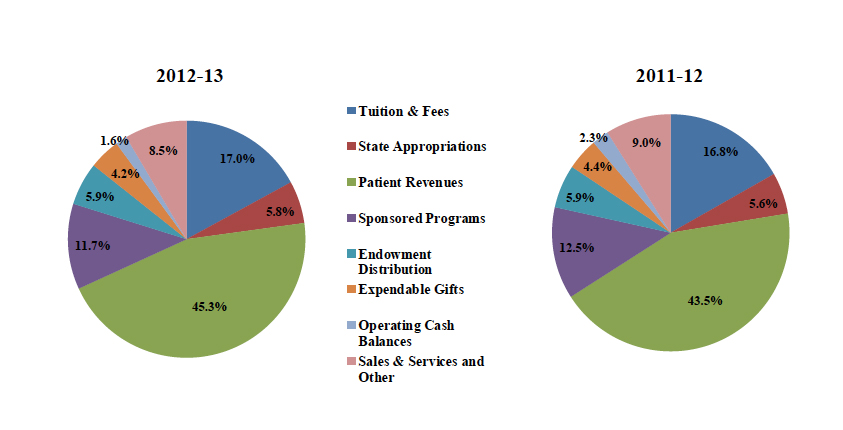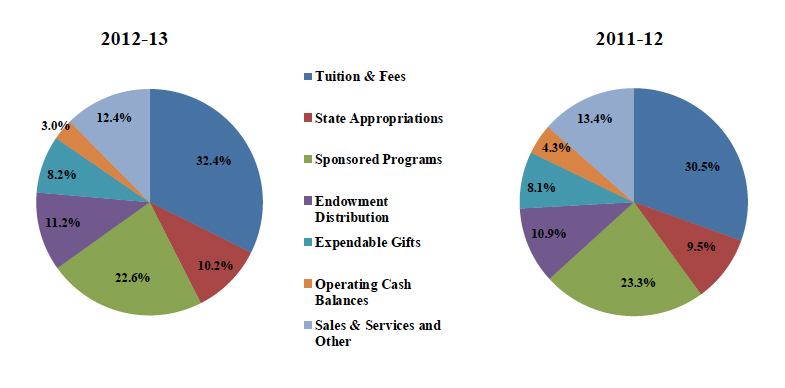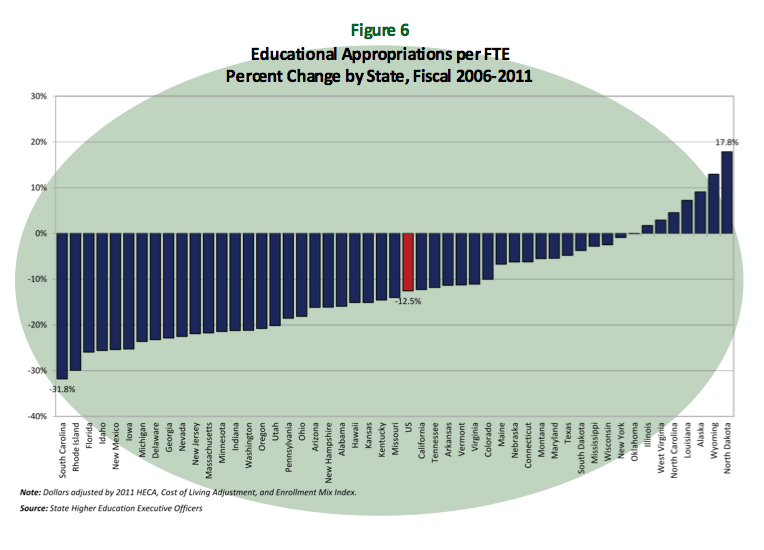On the Failure of Legacy Governance at the University of Virginia
Make sure to check out: Inside Higher Ed | Blog U
Crises and controversies are almost always useful learning moments, including in the world of higher education. I’m learning much this week while observing a roiling debate about the de facto removal of the University of Virginia’s President (Teresa A. Sullivan) after a mere two years in her leadership position. I’ve also found this an interesting if uneasy affair to observe following much turmoil here at the University of Wisconsin-Madison in AY 2010-2011 about the possible separation of my university from the University of Wisconsin System via a scheme deemed the New Badger Partnership. The New Badger Partnership involved the creation of whole host of needed flexibilities, as well as a separate Board of Trustees (the equivalent of the University of Virginia’s Board of Visitors). This too was a roiling debate, which intersected, unfortunately, with the turmoil generated by Governor Scott Walker’s proposal to remove collective bargaining rights from in the public sector. To cut a long story short, our chancellor (Carolyn “Biddy” Martin) resigned after being in her position for just under three years to move to Amherst College, a bittersweet move, no doubt, for someone with genuine affection for UW-Madison.
Being immersed in the middle of huge governance debates makes one sensitive to their destructive elements, but also what they help shed light on. In this entry, I’ll try and flag some key events and resources to track the unfolding of the University of Virginia controversy, but also stand back and draw a few lessons, especially with respect to the governance of US public research universities in an era of austerity.
The official statements about President Sullivan’s removal can be read here:
- Teresa Sullivan To Step Down Aug. 15 as U.Va. President (10 June)
- Full Text of Email Announcing Sullivan’s Stepping Down (10 June)
- Rector Dragas’ Remarks to VPs and Deans (10 June)
- Statement from Gov. McDonnell (10 June)
The decision was announced by Helen E. Dragas, Rector of the University of Virginia’s Board of Visitors. As noted on the University website:
The Board of Visitors is composed of sixteen voting and one ex-officio non-voting members appointed by the Governor of the Commonwealth of Virginia, subject to confirmation by the General Assembly, for terms of four years. In addition, at the first regular meeting of the second semester of the academic session each year, on recommendation of the Executive Committee, the Board of Visitors may appoint for a term of one year, a full-time student at the University of Virginia as a nonvoting member of the Board of Visitors. The Rector and Visitors serve as the corporate board for the University of Virginia, and are responsible for the long-term planning of the University. The Board approves the policies and budget of the University, and is entrusted with the preservation of the University’s many traditions, including the Honor System.
Link here for the MANUAL OF THE BOARD OF VISITORS OF THE UNIVERSITY OF VIRGINIA 2004 (rev February 23, 2012) for full details on the Board’s “powers and duties,” which includes appointing and removing the University’s President.
Yet, in less than one week, we’ve also seen:
- College chairs, program directors issue letter to “;protest” Sullivan’s resignation (13 June)
- Statements by Rector Dragas (13 June) and EVP/Provost John Simon and EVP/COO Michael Strine (14 June) stating that “The Board of Visitors’ action is resolute and authoritative” and “confidential” in nature
- News, via the Washington Post, that many of the reasons hinted at removing Sullivan were in fact flagged by Sullivan herself on 3 May in a frank and reflective strategy document
- The emergence of an online petition (Rector and the Board of Visitors of the University of Virginia: Reinstate Teresa Sullivan as President of the University of Virginia) with 1000+ signatures
- The emergence of a Facebook page, satirical website and Twitter feeds (e.g, http://twitter.com/RectorDrago) regarding the Board of Visitors, especially the board’s rector, Helen E. Dragas, and vice rector, Mark J. Kington.
- Discovery that the Board of Visitors’ “dodged” public notice law (14 June)
- Resignation of the Darden Foundation’s Board of Trustees (Peter Kiernan) (14 June), following the release of an email (10 June) exposing his involvement in this supposedly “confidential” matter
- A Faculty Senate rebuke of the Board of Visitors, including its “lack of confidence in the Rector, the Vice Rector, and the Board of Visitors” (14 June)
- News, via the Washington Post, that ‘Three members of U-Va. board were kept in dark about effort to oust Sullivan,’ that only three members of the executive committee of the Board were able to attend the meeting where the final decision was made, and that the Governor of Virginia was not accurately informed [lied to?] about the deliberative process within the Board
- Student Council’s Request to the Board of Visitors for “a full explanation of the events and circumstances surrounding the departure of President Teresa Sullivan” (15 June)
- Virginia Governor Bob McDonnell calls “for more dialogue between the University of Virginia’s faculty and governing board,” that his office should not be involved in Board of Visitor decisions, and that “;All I can tell you is that we have very qualified people that serve on these boards,” McDonnell said. “; … They’re really top-flight people. A lot of business people that have run major organizations. And these decisions are largely left up to the boards.” (15 June)
- Resolution of College Faculty of Arts and Sciences Steering Committee (15 June)
There is ample coverage about the process, and the issues, via this pre-programmed Google search, and these local Virginian news sites:
- The Cavalier Daily
- The Daily Progress
Twitter is a great resource as well if you use the #UVa or #Sullivan hashtags.
Now, after 11 years here in the US, just as I start to think I’ve figured this country and its higher education institutions out, I get sideswiped yet again. What is surprising about this case?
First, look at the occupations of the 16 members of this key governance unit that the current and most recent Governors have appointed. As the Washington Post also noted:
And most of the 16 voting members of the University of Virginia’s governing board of visitors have given campaign contributions to governors who appointed them. In some cases, donations added up to hundreds of thousands of dollars.
This is a patently unbalanced and inward-oriented board, drawing from a very narrow segment of society. Given this approach to sourcing Board members, the capacity for group think, and an inability to reflect on the larger extra-Virginian context (including outside the US), cannot help but be limited. The homogeneous nature of the Board of Visitors arguably helps to explain how ineffective they are in handling this issue, and understanding how organizations like universities actually function.
Second, and on a related note, where are the faculty and staff voices on this Board? All we see are alumni (almost all business people, doctors and lawyers) and one “full-time student at the University of Virginia as a nonvoting member.” Even the heavily debated Board of Trustees being considered here at UW-Madison was to have 11 members appointed by the Governor, with the remaining 10 members representing multiple UW-Madison constituencies (faculty, staff, classified staff, alumni, tech transfer).
Third, there is a huge and still growing gap between declining level of public funding for public higher education in the US and the desire of state governments to maintain if not increase their governing power. In the case of the University of Virginia, for example, see these figures (and note the dark red element which is State Appropriations):

Figure 1: SOURCES FOR THE CONSOLIDATED OPERATING EXPENDITURE BUDGET (Source: University of Virginia, 2012-2013 Budget Summary All Divisions)

Figure 2: SOURCES FOR THE ACADEMIC DIVISION OPERATING EXPENDITURE BUDGET (Source: University of Virginia, 2012-2013 Budget Summary All Divisions)
These are important yet very limited proportions of revenue, and they’re not likely to get any larger in the long run. The austerity approach to higher education, so evident in many US states, clearly rules in Virginia. As the State Council of Higher Education for Virginia noted, in July 2011:
Five consecutive years of general fund (state tax revenue) budget reductions have put the affordability and accessibility of Virginia’s nationally acclaimed system of public higher education at risk. Measurements of the student cost share of education and the cost as a percentage of per capita disposable income at Virginia institutions are both at record high levels (least affordable).
This is also a question that needs to be flagged at the national scale in the US, as is evident in this State Higher Education Executive Officers (SHEEO) figure:

Tags: University, Virginia
